Abstract
Upflow, anaerobic, fixed-bed, activated charcoal biotreatment columns capable of operating at free cyanide concentrations of greater than 100 mg liter-1 with a hydraulic retention time of less than 48 h were developed. Methanogenesis was maintained under a variety of feed medium conditions which included ethanol, phenol, or methanol as the primary reduced carbon source. Under optimal conditions, greater than 70% of the inflow free cyanide was removed in the first 30% of the column height. Strongly complexed cyanides were resistant to removal. Ammonia was the nitrogen end product of cyanide transformation. In cell material removed from the charcoal columns, [14C]bicarbonate was the major carbon end product of [14C]cyanide transformation.
Full text
PDF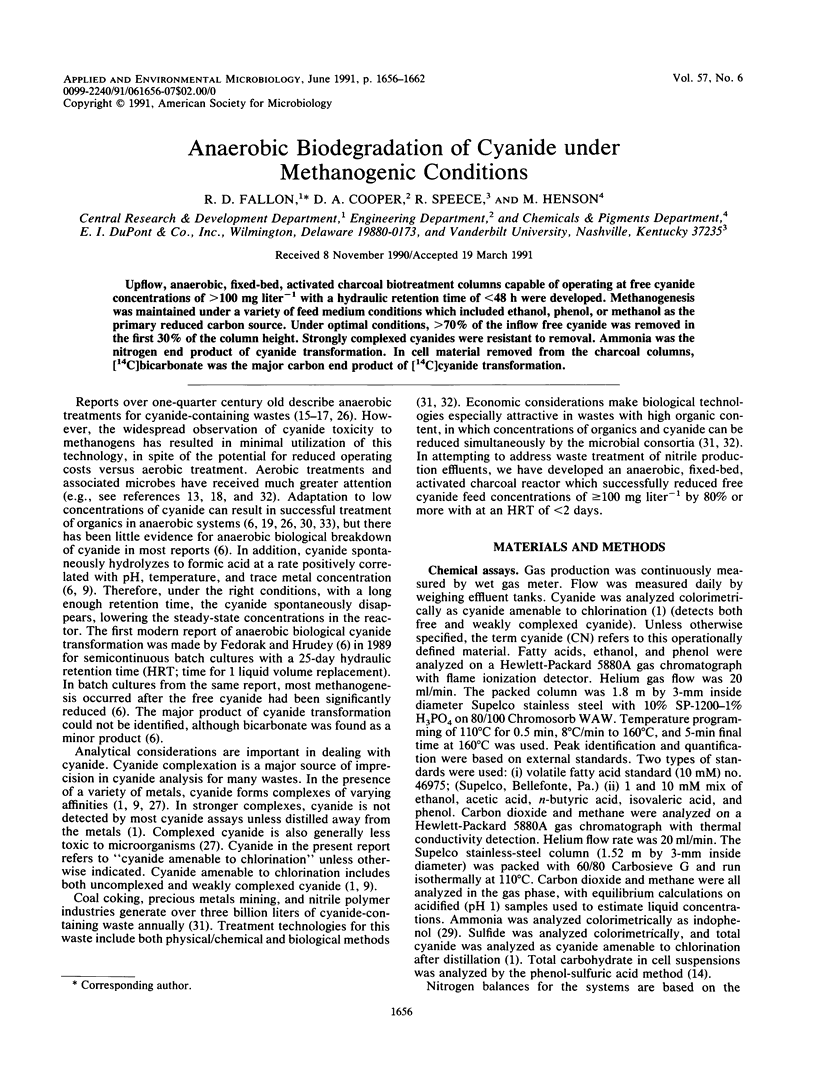

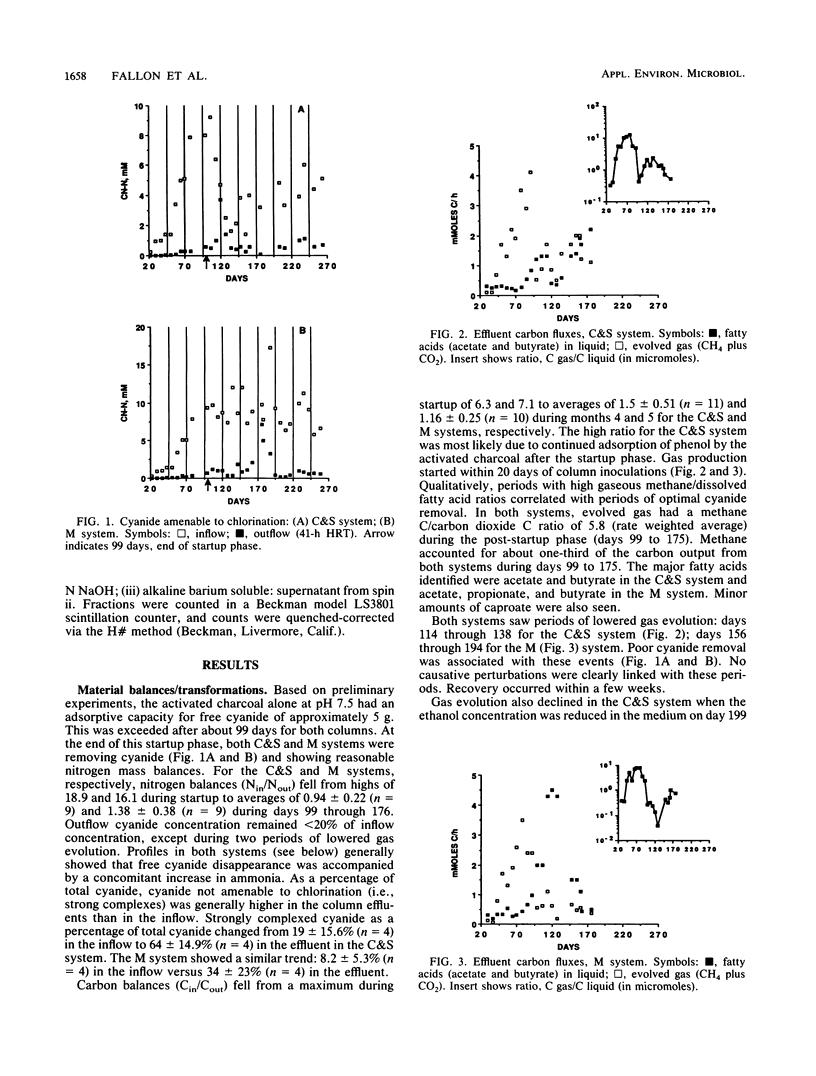
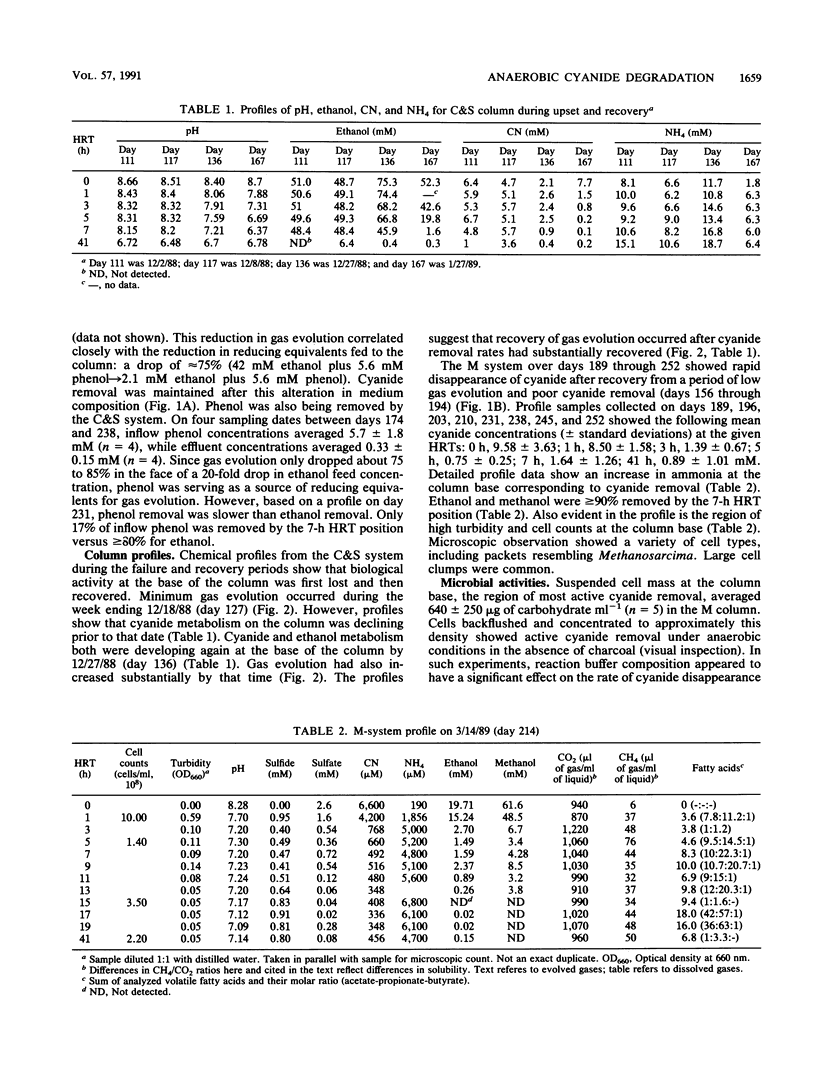
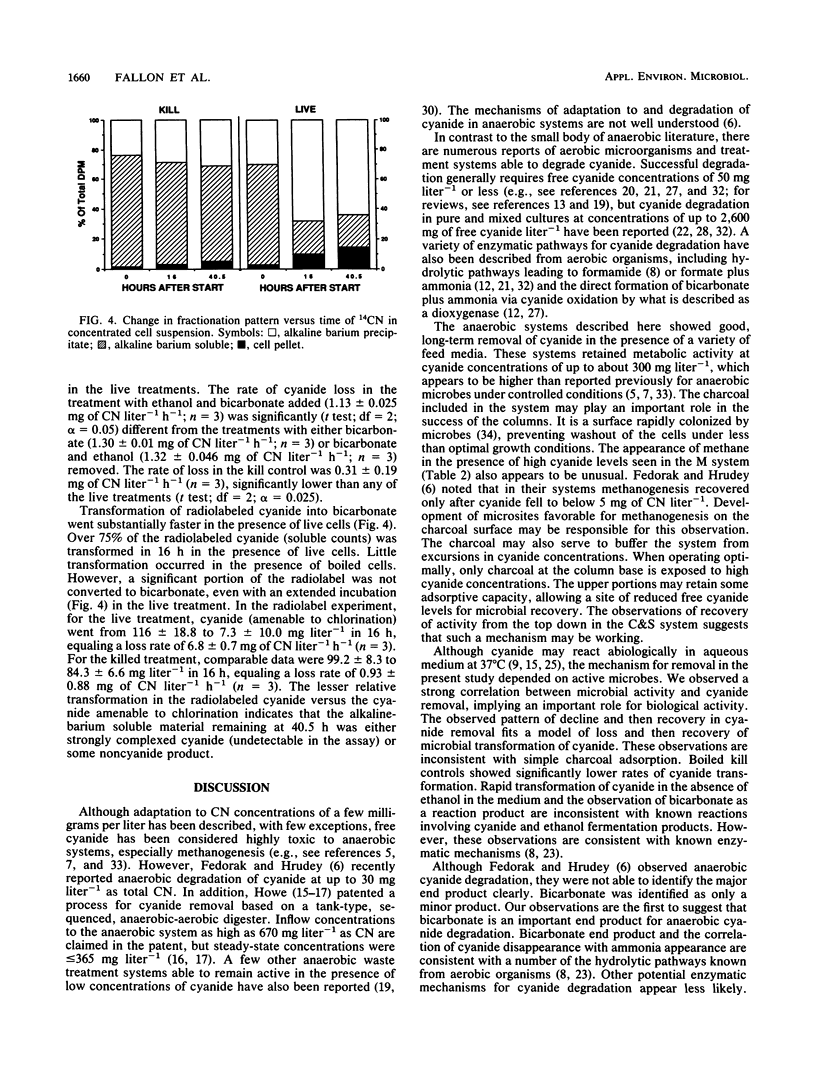
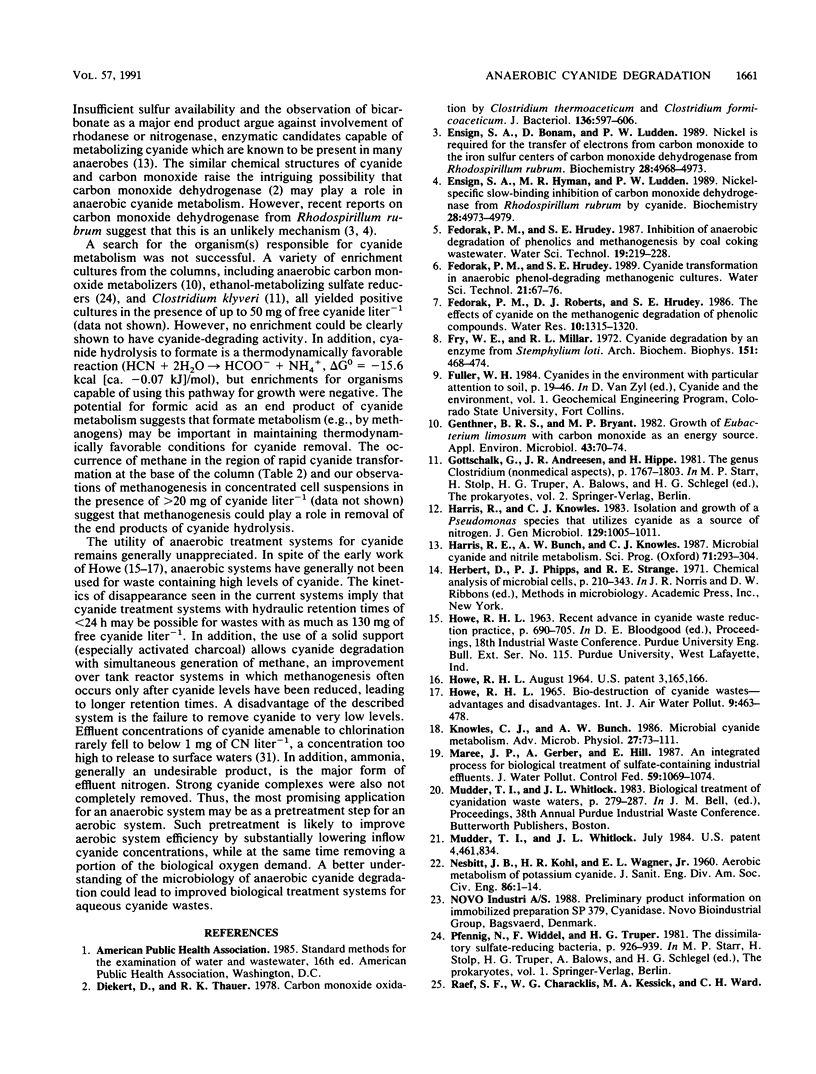
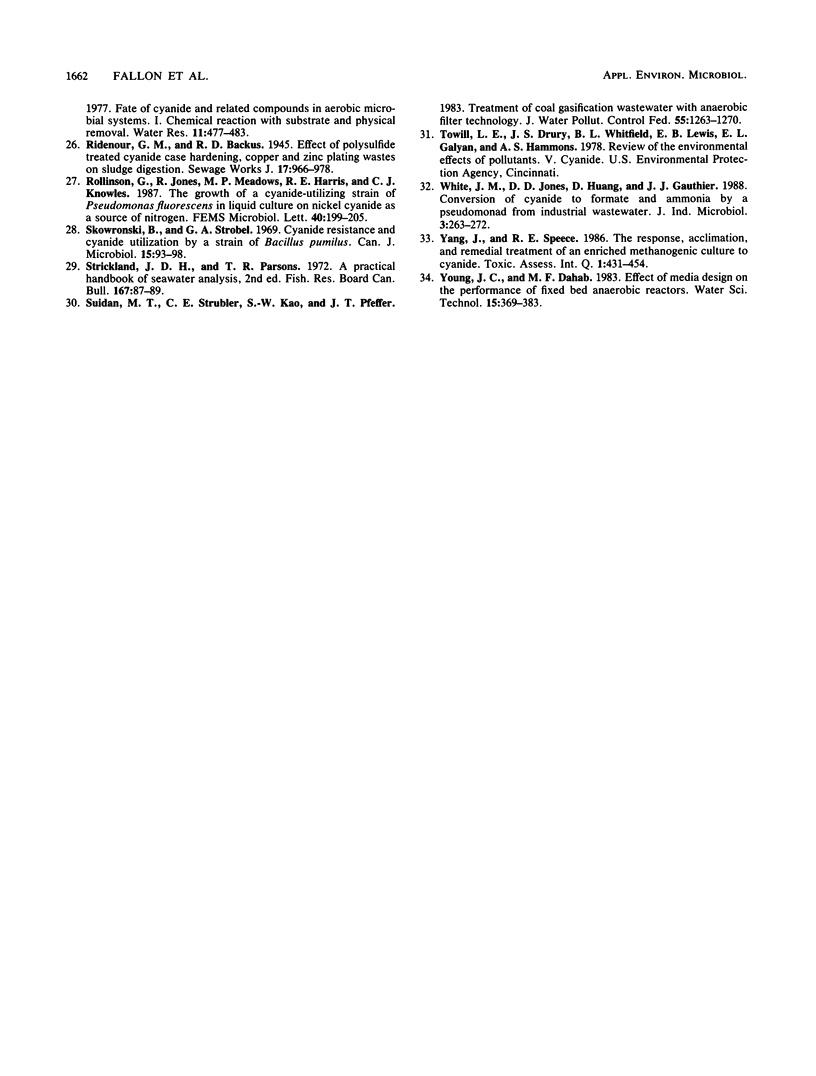
Selected References
These references are in PubMed. This may not be the complete list of references from this article.
- Diekert G. B., Thauer R. K. Carbon monoxide oxidation by Clostridium thermoaceticum and Clostridium formicoaceticum. J Bacteriol. 1978 Nov;136(2):597–606. doi: 10.1128/jb.136.2.597-606.1978. [DOI] [PMC free article] [PubMed] [Google Scholar]
- Ensign S. A., Bonam D., Ludden P. W. Nickel is required for the transfer of electrons from carbon monoxide to the iron-sulfur center(s) of carbon monoxide dehydrogenase from Rhodospirillum rubrum. Biochemistry. 1989 Jun 13;28(12):4968–4973. doi: 10.1021/bi00438a010. [DOI] [PubMed] [Google Scholar]
- Ensign S. A., Hyman M. R., Ludden P. W. Nickel-specific, slow-binding inhibition of carbon monoxide dehydrogenase from Rhodospirillum rubrum by cyanide. Biochemistry. 1989 Jun 13;28(12):4973–4979. doi: 10.1021/bi00438a011. [DOI] [PubMed] [Google Scholar]
- Fry W. E., Millar R. L. Cyanide degradion by an enzyme from Stemphylium loti. Arch Biochem Biophys. 1972 Aug;151(2):468–474. doi: 10.1016/0003-9861(72)90523-1. [DOI] [PubMed] [Google Scholar]
- Genthner B. R., Bryant M. P. Growth of Eubacterium limosum with Carbon Monoxide as the Energy Source. Appl Environ Microbiol. 1982 Jan;43(1):70–74. doi: 10.1128/aem.43.1.70-74.1982. [DOI] [PMC free article] [PubMed] [Google Scholar]
- HOWE R. H. BIO-DESTRUCTION OF CYANIDE WASTES--ADVANTAGES AND DISADVANTAGES. Air Water Pollut. 1965 Aug;9:463–478. [PubMed] [Google Scholar]
- Harris R., Knowles C. J. Isolation and growth of a Pseudomonas species that utilizes cyanide as a source of nitrogen. J Gen Microbiol. 1983 Apr;129(4):1005–1011. doi: 10.1099/00221287-129-4-1005. [DOI] [PubMed] [Google Scholar]
- Knowles C. J., Bunch A. W. Microbial cyanide metabolism. Adv Microb Physiol. 1986;27:73–111. doi: 10.1016/s0065-2911(08)60304-5. [DOI] [PubMed] [Google Scholar]
- Skowronski B., Strobel G. A. Cyanide resistance and cyanide utilization by a strain of Bacillus pumilus. Can J Microbiol. 1969 Jan;15(1):93–98. doi: 10.1139/m69-014. [DOI] [PubMed] [Google Scholar]


